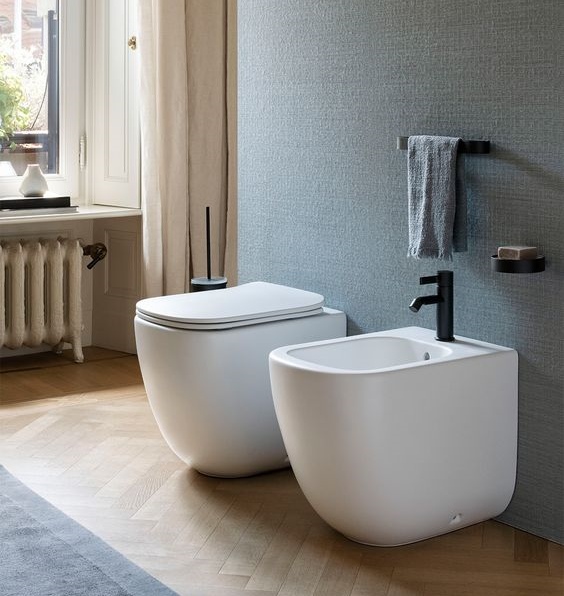Through this article, everyone can better understand what a bidet is, what types of bidets there are and how to choose bidet.
You may have seen them in bathrooms during trips abroad: a second porcelain trough, next to the toilet, that looks like a cross between a urinal and a sink. That thing there is a bidet, people! Perhaps you’ve seen real estate listings boasting “luxury master bath with bidet.” So what exactly is a bidet?
What is a bidet?
Simply put, a bidet is a bathroom fixture designed to clean your nether regions after you use the toilet. You sit, you turn on the faucet, and a stream of water does what you would otherwise take care of with toilet paper. Got it?
Bidets are extremely popular throughout much of Europe, but they’re still a rarity in the U.S. There are a number of theories on why the bidet never took off here. One is that during the great indoor plumbing revolution, bidets happened to be associated with French prostitutes. Another is that Americans are too prudish and/or practical to spend money on two bowel-related fixtures, particularly if space in the bathroom is tight. And then there’s also simply habit. We’ve always done it this way, so why change?
Nonetheless, bidets are slowly steaming into luxury markets. Acolytes say using bidets is more hygienic than using toilet paper, easier on the earth, and easier on your plumbing. No more toilet paper to clog up the drain! (Or less of it, certainly.)
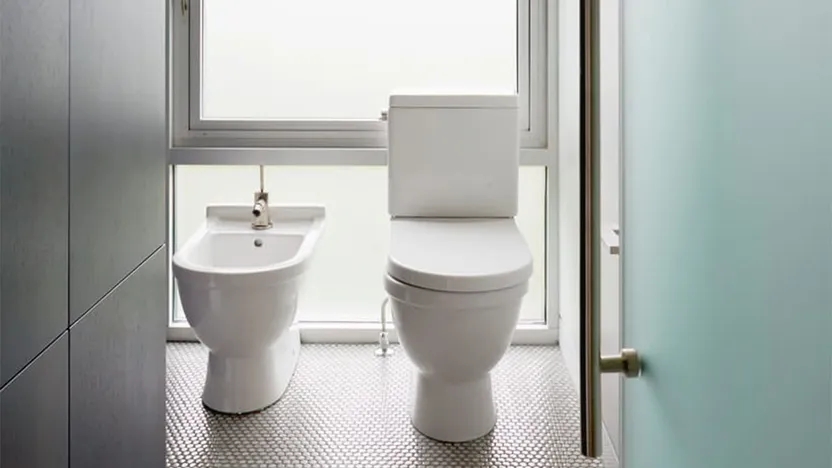
Luxury toilet and bidet set
Types of Bidets
Having a bidet is a hygienic, comfortable and ecological choice, as it gets you to use less toilet paper and reduce your waste. And it’s now possible to have one in any size of bathroom.
Traditional ceramic bidets are getting often replaced by less spacious alternatives, which use the toilet as a base to include bidet tasks.
If you have a big bathroom, you can choose to save space or to have the old fashioned one. So let’s compare the 3 main types of bidets and their pros and cons.
1. Ceramic bidets
The most traditional type of bidet is a separate device from the toilet, placed by it. It’s a ceramic bowl with a tap at the end, which allows you to control the water flow-and possibly temperature, nowadays.
It usually has two nozzles: one for posterior wash and another for feminine wash.
There are two different installation types for ceramic bidets, so they can be installed as the toilet (and look like it):
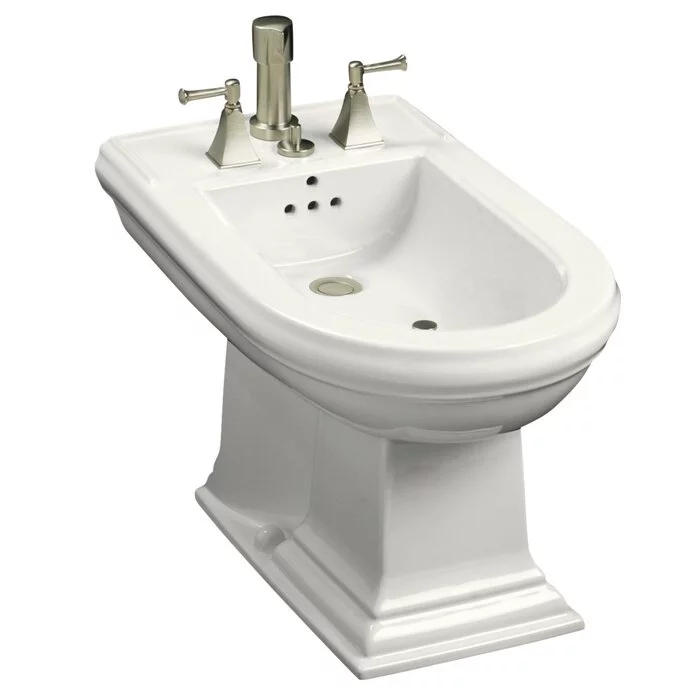
Floor mounted bidet: More common, this type has a lot more options of model

Wall mounted bidet: More expensive, it needs a metallic structure embedded in the wall. I has a clean and modern look and makes the floor easier to clean.
Besides the installation type, the two bidets above differ in the types of faucet used. For each type, you can find models with different numbers of holes for the faucet.
A specific bidet faucet must be bought separately for it, so pay attention to the number of holes needed for the faucet you prefer.
2. Toilet bidet seats
Toilet bidet seats can be installed on regular toilets, providing the same features.
It’s important to compare the size and shape of the seat with the toilet so they match. Check if your toilet’s bowl shape is round or elongated.
Toilet bidet seats have a built-in washlet. The way you control it depends on the type of seat:
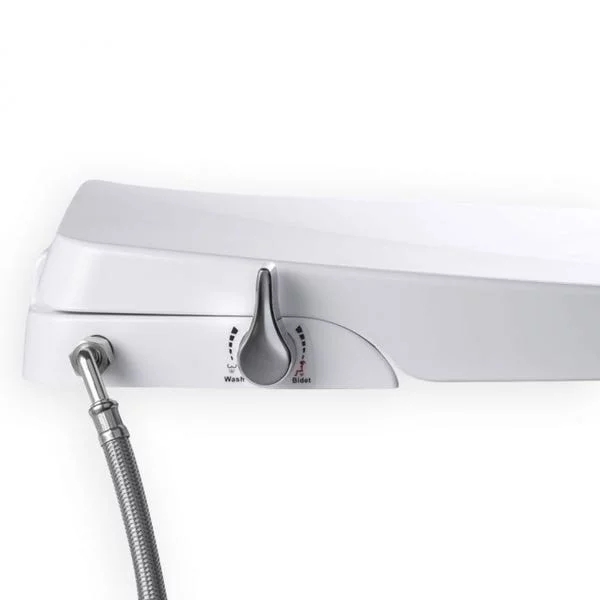
Non-electric bidet seats have a mechanical lever on the side and are directly connected to the plumbing. They require pressurized water,as they can’t pressurize.If you want warm water,you must provide it on the tap too.
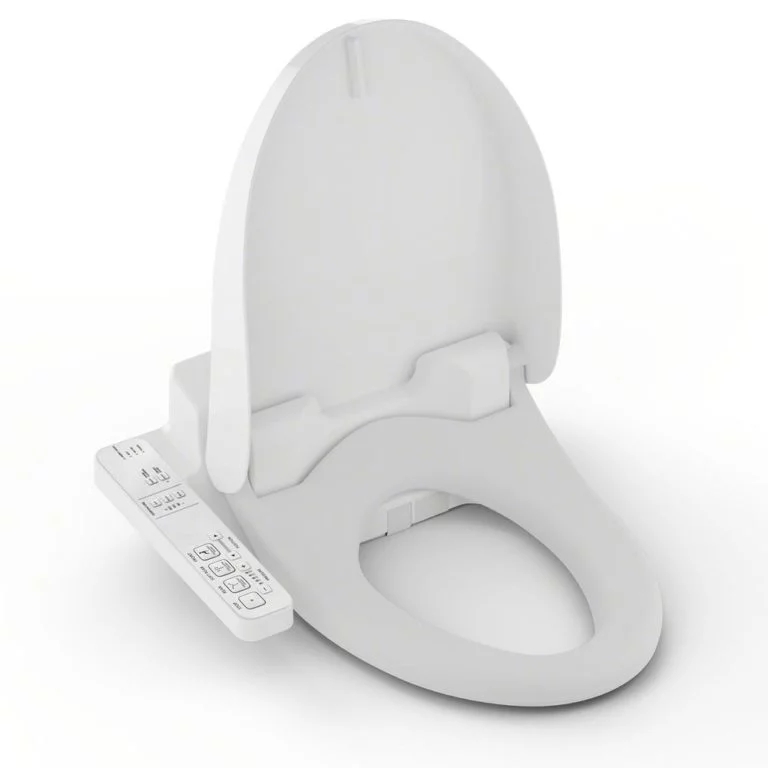
Electric bidet seats are controlled on a side panel or by remote control. They are more expensive and complicated to install. Using electricity allows them to heat the water and adjust water pressure. They have extra features, such as air dryer.
Both types can include self-cleaning washlets and dual nozzles, for posterior and feminine washes.
3. Handheld bidets
Handheld bidets are simply hoses with sprayers. They’re directly connected to the plumbing.
As non-electric toilet seats, they need pressured water and don’t offer any extra features. If you want warm water, you must provide it on the tap.
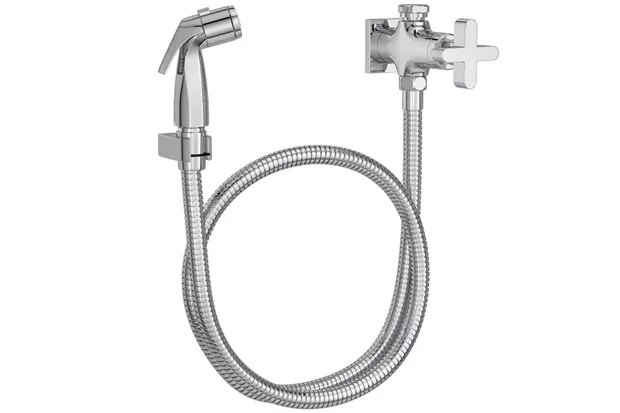
Handheld bidet display
How much does a bidet cost?
These days, there’s a bidet for nearly every budget and space constraint. Here are your options, and how much they cost:
Floor mounted bidet :Bidets can cost as low as $30 and as much as $6,900 for a higher-end model(famous brand). In addition, you can count on spending about $220 to have it installed, using your existing plumbing. In total, the average total cost of a bidet, including fixture price and installation, is about $1,100.
Toilet bidet seats: If you lack the space in your bathroom for a separate fixture, you can replace your existing toilet seat with an electric one, sometimes called a washlet, which will spritz water much like a bidet. Washlets are popular in Asia and prices have dropped in the United States to around $170 to $2,650 for one with additional features like warm water and a blow-dry.
Handheld bidets: An even favorable option is to affix a water-spraying attachment to your toilet bowl for as little as $80 and up to $120 for one with a warm water option.
Hope everyone can choose the right product for your bathroom. Below is our company’s bidet website for your choose:https://fohomeceramics.com/product-category/sanitary-ware/bidet/

